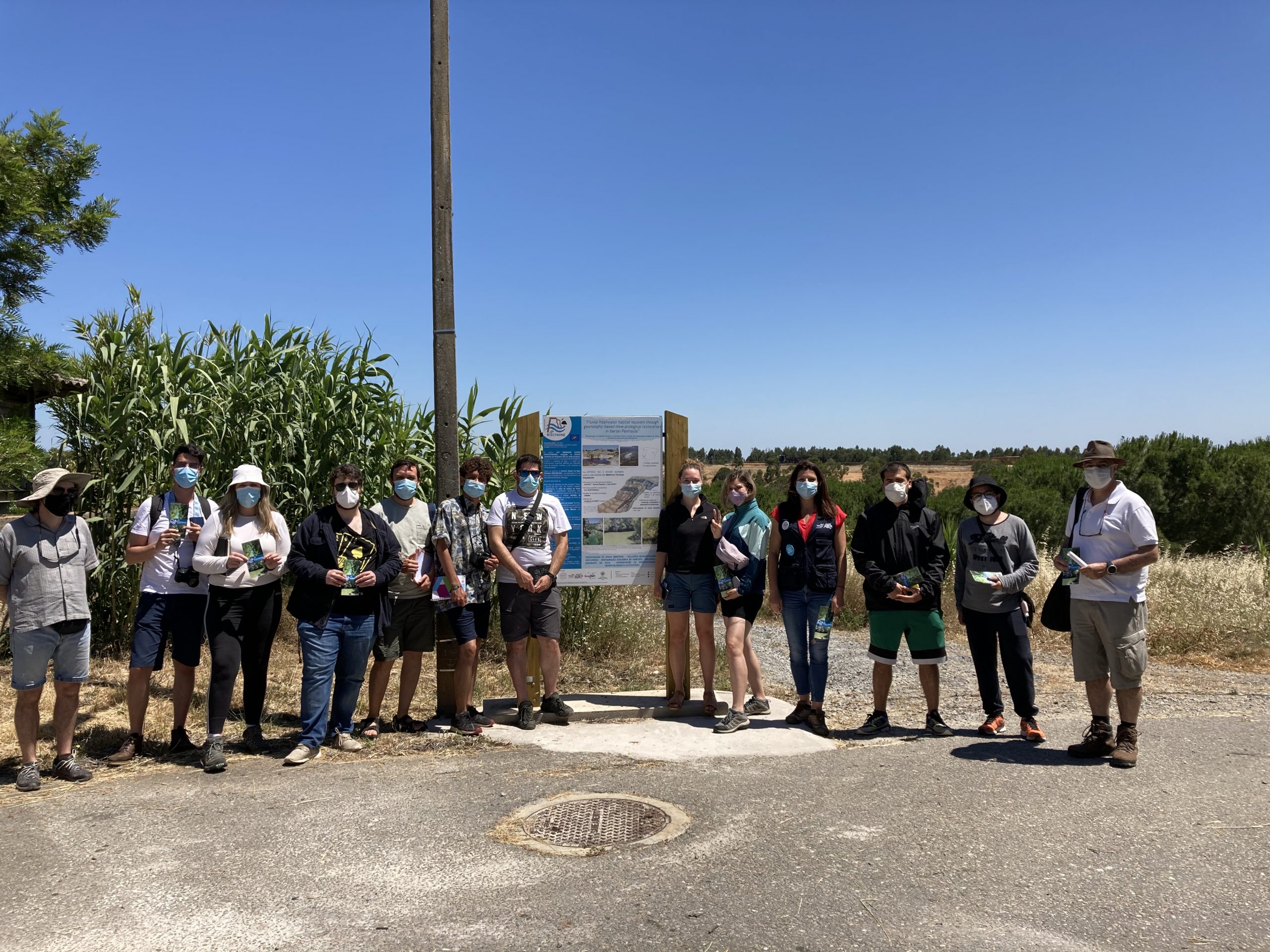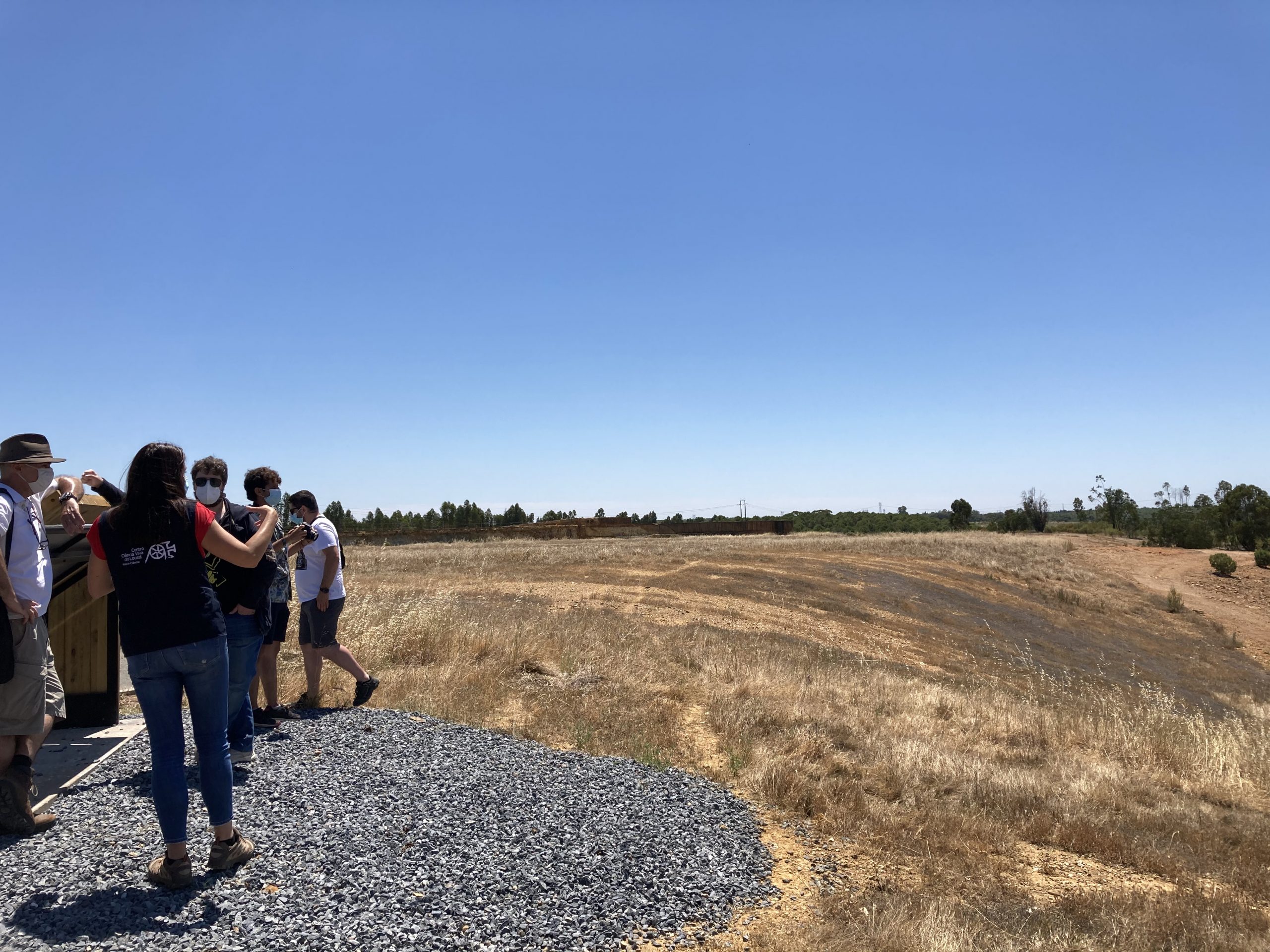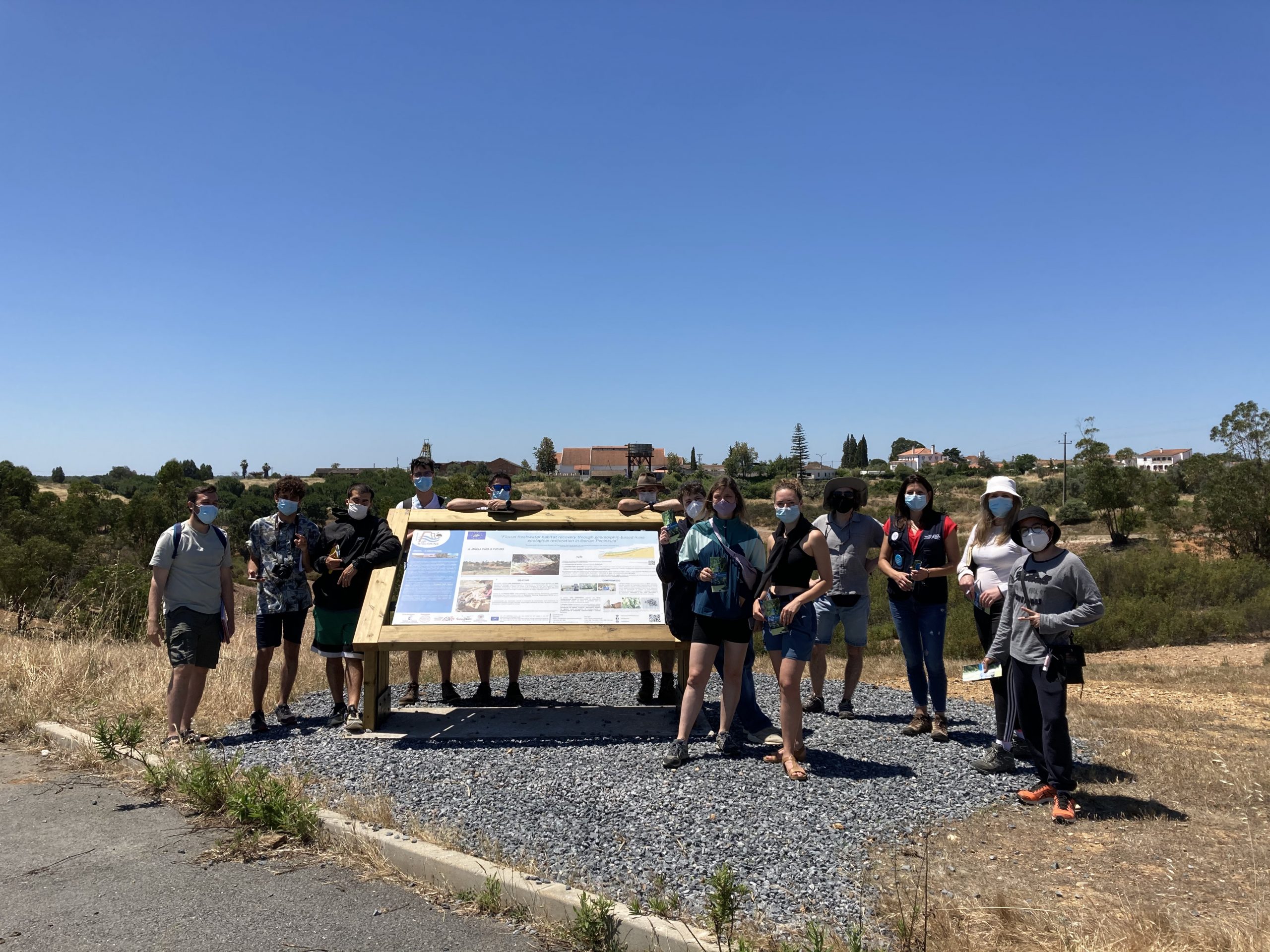A group of students and teachers from the Master’s Course in Geological Heritage from the University of Minho (Portugal), carried out a study visit to the Centro Ciência Viva do Lousal, including the future intervention area of the LIFE RIBERMINE project, on the past 4th of June .
After visiting the interior of CCVLousal (https://lousal.cienciaviva.pt/), where they were able to observe the valorization of old buildings related to mining activity through their conversion into an interactive museum space dedicated to geosciences, the group, consisting of 2 teachers and 10 students of various nationalities, explored the outside environment. The purpose of this visit was to get to know the old mining space, its history, environmental issues related to the mining activity, and the valorization of the industrial estate that began to be carried out a few years after the mine’s closure (which ceased in 1988).
During the field trip, several issues related to the environmental impacts resulting from around 8 decades of metallic mining in Lousal were explained, including the problem of Acid Mining Drainage (DAM). Some of the areas visited were the wetlands system created for the bioremediation of contaminated water and the future intervention area, where the Lousal Pilot Project will be installed.
The participants were very interested in all the topics covered, asked several questions, making this visit very fruitful for all parties!

Group from the University of Minho, next to the facade of the building of the Centro Ciência Viva do Lousal.

Group photo at the entrance to the “road of the pyrites”, which gives access to the future intervention area.

Partial aspect of the future intervention area in Lousal, where geomorphological reconfigurations, edaphic corrections with the construction of soil layers, and sowing of native plants of the region, will be carried out.

Visitors at the main board of the LIFE RIBERMINE project in Lousal.

